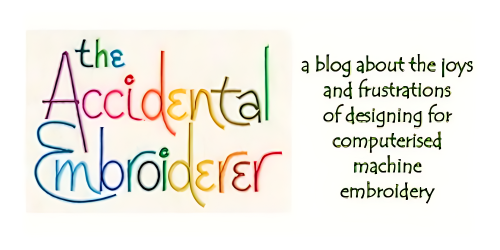Not quite finished…
One of my artist friends used to be an interior designer and some time ago I asked her what sort of designs would be most popular as "wall art" for someone decorating their home in a modern style. After some thought she said that simple, bold works in neutral colours would probably work well. Well, that hardly describes most of the things that I do! But I thought I might give "simple and neutral" a try, and dug out some old shell designs that I'd done some time ago. I arranged these into a simple panel shape and started stitching. Before I started, I thought that it would be a quick and easy job, because the shell shapes are very simple and they don't have a lot of stitched detailing. But I soon realised that the colours of each background and each patch of applique fabric would have to be carefully thought out and then painted, so although the stitching went quickly, the fabric took a LONG time to prepare
The unfinished shell panel
Here is the panel at the moment. It's about 2 feet long and 18 inches wide, and as you can see it needs finishing off, and I'm not quite sure what I'm going to do next. Maybe stitch on a fabric backing and make it into a tapestry-like hanging? Or maybe frame or mount it as an ordinary painting? I'm not sure yet, but I'm going to put it aside for a while before I decide, because to be honest I'm fed up with looking at it! I need to move on to something new, at least for a while
